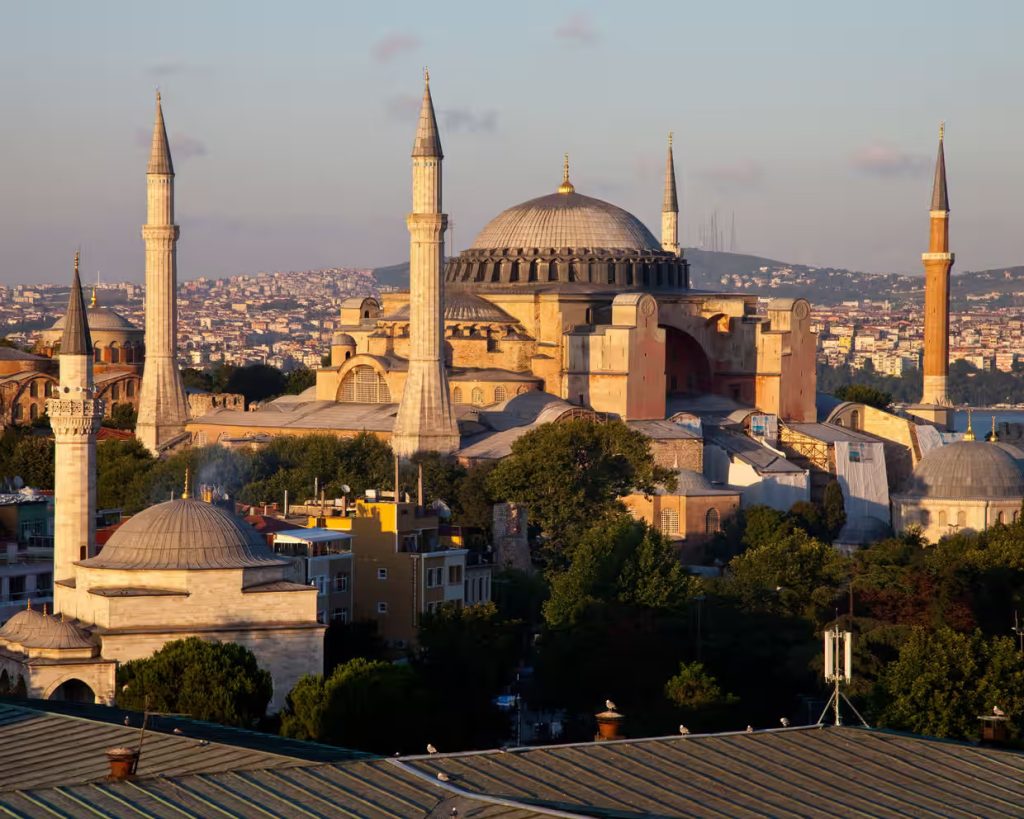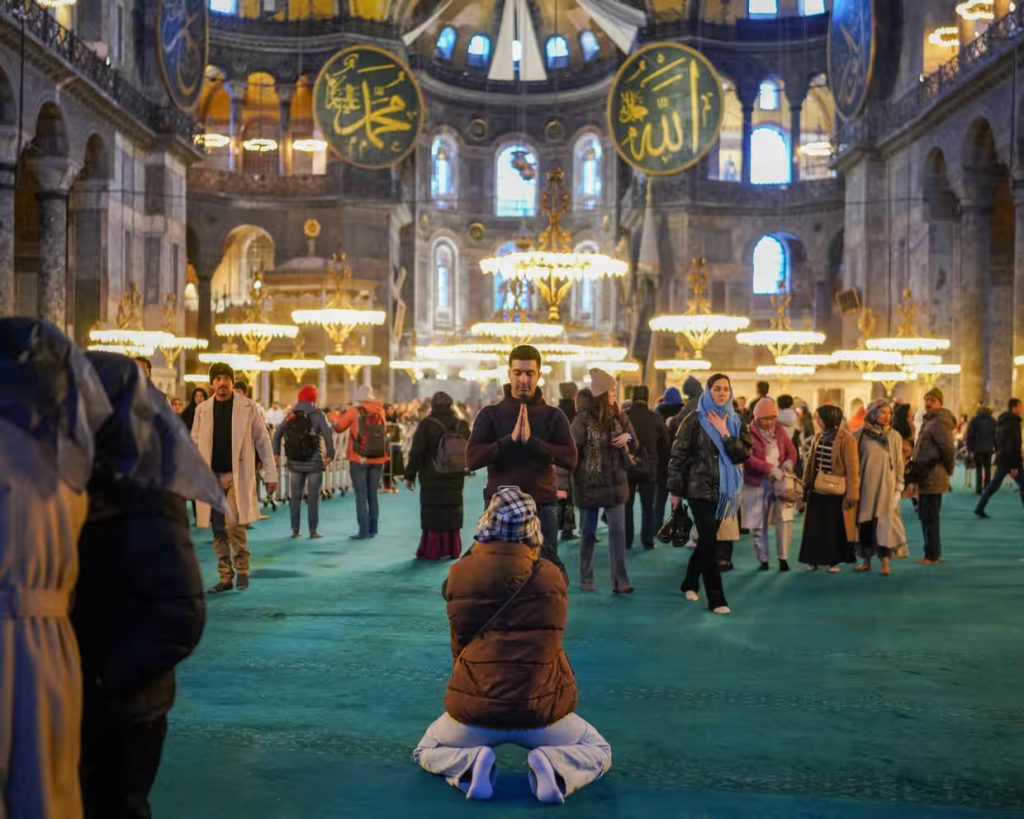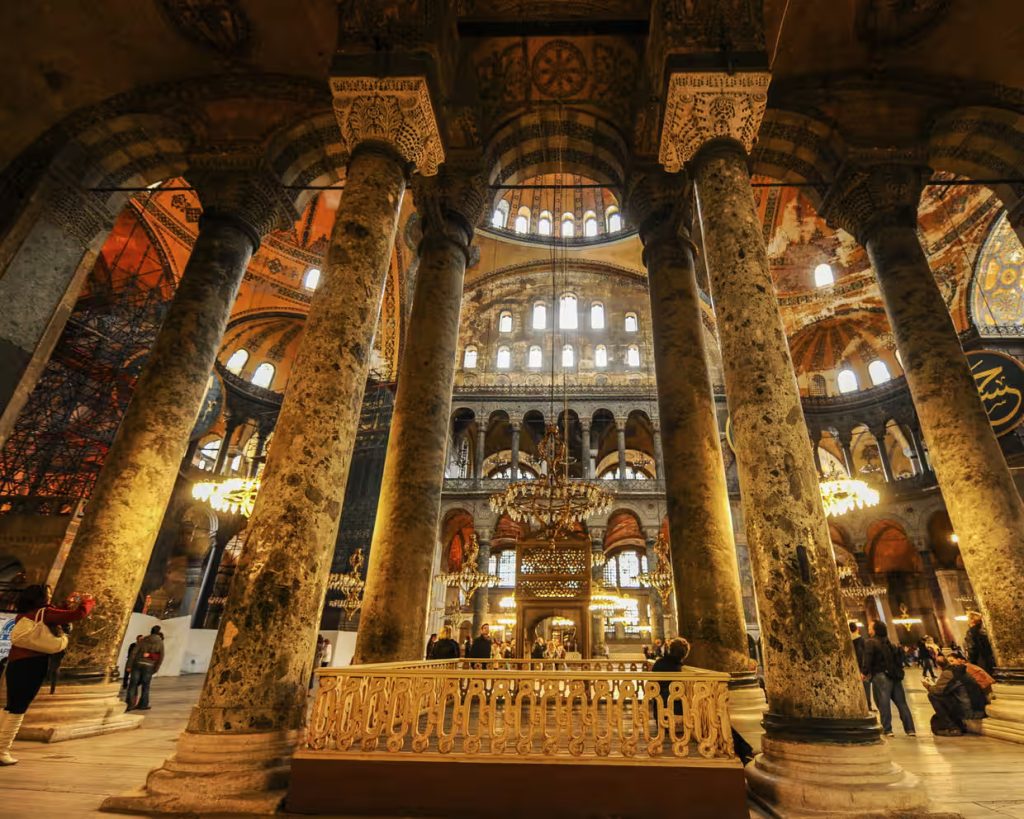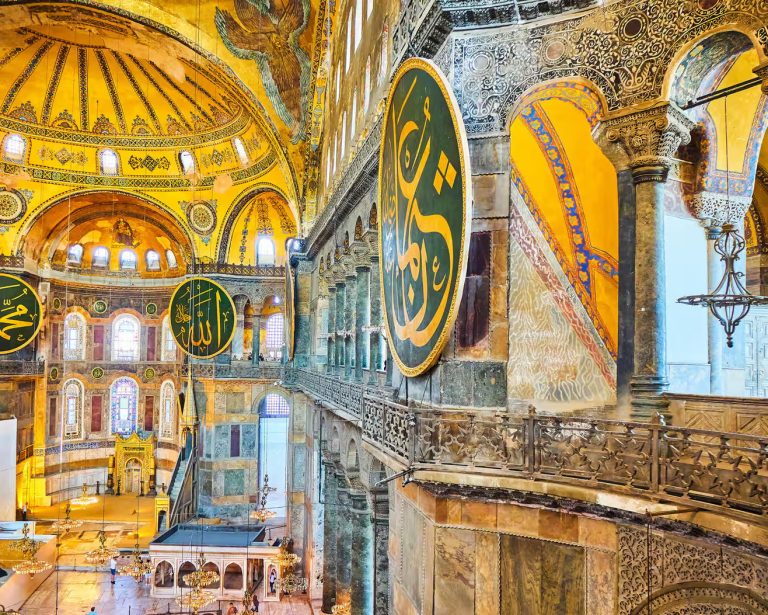Standing beneath the stone archways, intricate murals, and delicate filigree lamps of the Hagia Sophia, architect Hasan Fırat Diker contemplates the immense responsibility of his role: safeguarding a centuries-old monument that stands as both Turkey’s most iconic mosque and one of its most politically sensitive landmarks. He is leading one of the most comprehensive restoration campaigns in the Hagia Sophia’s nearly 1,500-year existence, including critical work to reinforce its vast central dome and protect it against seismic threats.
“This isn’t just a national duty—it’s a responsibility to the world,” Diker said, gesturing toward the visitors kneeling on soft turquoise carpets or marveling at the soaring murals of winged seraphim. He pointed to the golden mosaics and deep blue interior of the main dome, calling it one of the many “unsolved challenges” in the building’s architecture. Originally completed in AD 537 during the Byzantine Empire, the massive structure shows its age: the central dome, for instance, sits unevenly atop four columns of varying dimensions. Its current form is the result of centuries of makeshift reinforcements, following the collapse of the original dome in an earthquake in 558, and damage to adjoining half-domes in subsequent tremors.
Despite being a mosque today, the Hagia Sophia still carries the marks of its earlier life as one of Christendom’s greatest cathedrals, before being transformed after the Ottoman conquest of Constantinople in 1453.

Originally converted into a museum by the Turkish Republic in 1935, the Hagia Sophia was reclassified as a mosque in a highly controversial 2020 court ruling. The decision drew widespread international criticism, including from Unesco, which described the Hagia Sophia as “an architectural masterpiece” and warned that its reclassification diminished the building’s value as a symbol of shared global heritage.
Now, architect Hasan Fırat Diker, together with a team of engineers, architects, and art historians appointed by Turkish authorities, is leading one of the most ambitious restoration projects in recent memory. Their work includes removing the lead sheeting from the main dome and reinforcing the delicate connections between the semi-domes and the central cupola to guard against seismic damage.
The team is also assessing the structural integrity of the four massive supporting pillars and examining parts of the foundation below ground. “This could become one of the most significant restorations of our time in Turkey,” Diker remarked.
The urgency of their work was underscored just last month, when a 6.2-magnitude earthquake struck off Istanbul’s coast, shaking buildings across the city. Diker rushed from his office to inspect the Hagia Sophia’s interior, ensuring no damage had been sustained.

Turkey lies atop two major fault lines, making it highly vulnerable to earthquakes—an ever-present danger exacerbated by structural weaknesses in aging buildings. In early 2023, two devastating quakes in the country’s southeast claimed over 53,000 lives, with damage spanning an area the size of Germany. Much of the destruction was attributed to deep-rooted corruption within the construction sector. In Istanbul, a metropolis of 16 million filled with both aging apartment blocks and architectural landmarks, the looming threat of a major earthquake is part of daily life.
“In the worst-case scenario, a powerful quake could shake the entire Hagia Sophia,” warned architect Hasan Fırat Diker. “The main arch that supports the central dome and its adjoining semi-domes could vibrate violently, leading to the formation of cracks.” He added that such an event could even send one of the minarets crashing into the domes or cause the arches to collapse entirely.
As he spoke, Diker traced an arc with his hand between the squat domes flanking the massive central dome, pointing out the patchwork repairs from three distinct eras of restoration, each layered atop the structure since its construction in the sixth century.

“For now, our focus will be on the outer surfaces, the minarets, and the main dome,” Diker explained. “Once we remove the lead covering from the dome, we’ll have a clearer picture. Over the centuries, various restorations have layered over the original structure, and the dome’s shape is no longer perfectly spherical because of these interventions. The real concern isn’t the dome itself, but the support beneath it. Once we uncover it, we’ll be able to identify any cracks more accurately.”
The restoration team plans to peel back centuries of modifications to assess how best to reinforce the building. They also hope to reveal hidden Ottoman-era murals that may be concealed beneath some of the dome’s gold and yellow paint.
While no definitive timeline exists for the work, scaffolding will soon be erected inside the Hagia Sophia, allowing daily operations to continue. A specially designed cover will protect the vulnerable exposed surface of the dome from harsh weather conditions, such as rain or intense sunlight.
“Our priority is to ensure the comfort of our visitors,” Diker said. “We want those who come to experience as much of the Hagia Sophia as possible, even while restoration is underway.”

